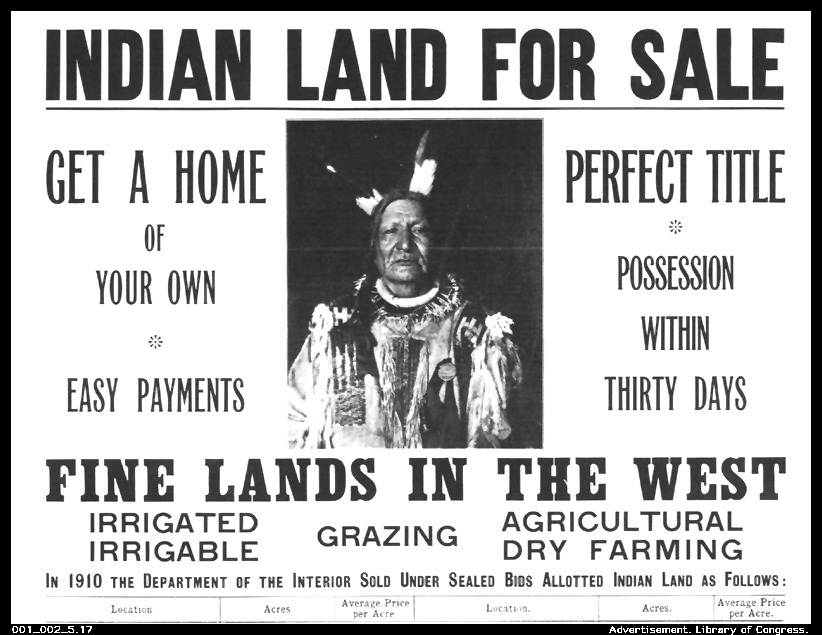The Dawes Act (1887)
Tue Feb 08, 1887

Image: U.S. Department of the Interior advertisement offering ‘Indian Land for Sale’. The man pictured is a Yankton Sioux named Not Afraid Of Pawnee. [Wikipedia]
The Dawes Act, passed on this day in 1887, authorized the U.S. to divide indigenous tribal land into allotments for heads of families and individuals, leading to a loss of 2/3rds of land (~100 million acres) over the next 50 years.
The law converted traditional systems of land tenure into a state-imposed system of private property by forcing Native Americans to “assume a capitalist and proprietary relationship with property” that did not previously exist in their cultures, according to historian Kent Blansett. The act declared remaining lands after allotment as “surplus” and available for sale, including to non-Natives.
Between 1887 and 1934, indigenous people lost control of about 100 million acres of land, or about two-thirds of the land base they held in 1887, as a result of the act.
The loss of land and the break-up of traditional leadership of tribes had such devastating consequences that many scholars refer to the Dawes Act as one of the most destructive U.S. policies for indigenous people in history.
- Date: 1887-02-08
- Learn More: en.wikipedia.org, www.history.com.
- Tags: #Indigenous.
- Source: www.apeoplescalendar.org
 9·3 days ago
9·3 days ago (translated by google lens)
(translated by google lens)

